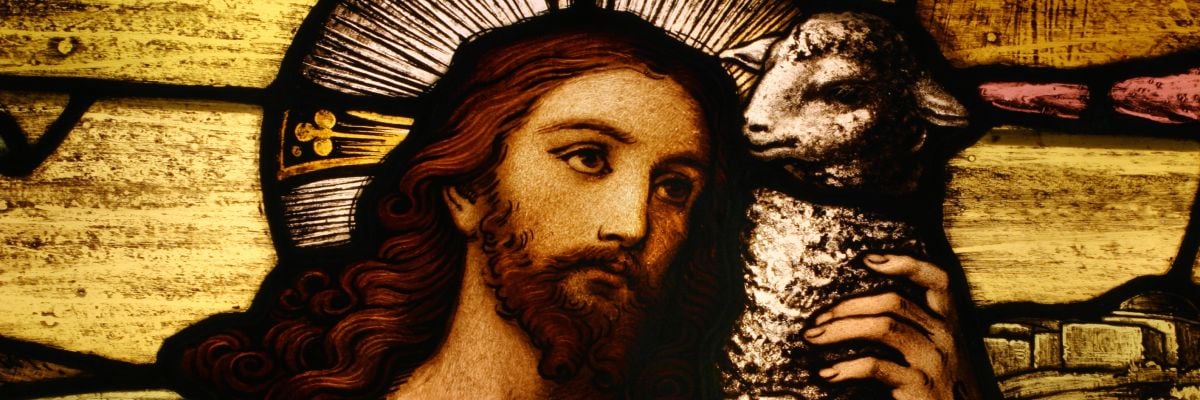
During this Easter week, here are three key questions about the mystery of the Resurrection and how to answer them, courtesy of Jimmy Akin and his book A Daily Defense.
1. How do you know it isn’t all symbolic?
Challenge: By allowing Genesis 1 to present “the work of the Creator symbolically as a succession of six days of divine ‘work’” (CCC 337), the Church sets a dangerous precedent that could undermine our faith. If this is symbolic, how do you know other things aren’t? For example, why should we take the resurrection of Christ literally rather than symbolically?
Defense: Everyone recognizes that Scripture contains symbolic things. It’s a matter of correctly identifying them.
It can be tempting to reflexively classify things in Scripture as literal (or symbolic) to avoid sorting out the difference, but we must undertake this task.
Humans use both literal and symbolic speech, and we constantly discern the difference, often without being conscious of it. If someone says we need to “roll out the red carpet” for a dignitary, English speakers intuitively recognize this is a nonliteral way of saying he needs to be given a special welcome. It is an expression known for its nonliteral use in English.
When we encounter writing from other cultures, it can be harder to tell literal from symbolic, since we are less familiar with their literary conventions, but it can be done. All recognize the biblical prophets used symbols and Jesus told parables. This shows we can learn to recognize nonliteral forms in Scripture.
Often symbols are identified by cues in the text that reveal they are not literal. For example, the creation of the sun on the fourth day, when the sun’s presence is what makes it day, is a cue the days of Genesis 1 are not literal. No human witnessed the creation of the world, and Genesis, written somewhere around 1000 B.C., was penned long after the event. Genesis 1 is more likely to be nonliteral than a text written soon after an event and using eyewitness testimony.
The latter is what we have with the resurrection of Jesus. The New Testament was written within a few decades of the Resurrection and was composed by or in consultation with eyewitnesses (cf. Luke 1:2, John 21:24). It also contains emphatic statements about the Resurrection’s reality (cf. 1 Cor. 15:1-20).
We need have no fear that recognizing parts of Scripture are symbolic will undermine the Faith any more than Jesus’ use of parables does.
2. Exactly where and when did the risen Jesus appear to the disciples?
Challenge: The Resurrection accounts are contradictory. Luke indicates that Jesus appeared to the disciples in Jerusalem on the same day, but Matthew and Mark say he appeared later in Galilee.
Defense: This is not a contradiction. Jesus appeared in both places.
Paul indicates that Jesus made multiple post-Resurrection appearances (1 Cor. 15:5-8). In Acts, Luke indicates he appeared repeatedly over a period of forty days (Acts 1:3). Consequently, the evangelists needed to make choices about what appearances to include in their Gospels.
Luke chose appearances Jesus made the same day in the Jerusalem vicinity (Luke 24:13-44), while Matthew chose one in Galilee (Matt. 28:16-20). Mark also indicates Jesus appeared in Galilee (Mark 14:28, 16:7), but his original ending (which may be paralleled in Matthew) has been lost.
There is no contradiction. During his ministry, Jesus visited both Galilee and the Jerusalem area, and he did the same after the Resurrection. John thus records appearances in both places (John 20:19-29, 21:1-23).
After visiting Galilee, the disciples were back in the Jerusalem area before the Ascension (Luke 24:50-53, Acts 1:9-12), when Jesus again appeared there.
The Gospels thus indicate that 1) shortly after the Resurrection, Jesus appeared to the disciples, who were still in Jerusalem; 2) he later appeared to them in Galilee; and 3) toward the end of the forty days he appeared to them again in the Jerusalem vicinity.
He told them to remain in the city until the descent of the Holy Spirit on Pentecost, when they began their major evangelistic work (Luke 24:49, Acts 1:4, 2:1-47).
This is why Luke focuses on the appearances in and around Jerusalem. He is planning to chronicle, in Acts, how the Christian Faith began spreading in stages, “in Jerusalem and in all Judea and Samaria and to the end of the earth” (Acts 1:8). Pulling the literary focus away from Jerusalem to Galilee would distract from the events he will chronicle, since the apostles made Jerusalem their home base for many years, and it became the epicenter of Christian evangelization (Acts 1-12).
Matthew and Mark, not planning on writing sequels to their Gospels, focused on an appearance in Galilee, bringing closure on a literary level by taking us back to where Jesus’ ministry began.
John, supplementing the synoptic Gospels, records additional appearances in both places.
3. Is Easter pagan?
Challenge: Easter is a pagan holiday. Its timing is based on the full moon and the spring equinox, and it’s named after the goddess Ishtar.
Defense: Easter’s origins are Jewish. It is the Christian equivalent of Passover.
The word Easter is of English origin. Ishtar was worshipped in Mesopotamia (modern Iraq), not England, which is thousands of miles away. Despite sounding similar, the two words are unrelated.
The eighth-century British historian Bede claimed that the word Easter came from the name of the month in which it occurred (basically, April). He said this month used to be called Eostur, though this was no longer true in his day. He also thought the month was named after a Germanic goddess who was no longer worshipped.
Bede is the only source who mentions this goddess, so he may be incorrect. Regardless, this applies only to the origin of the English word, not the origin of the feast. Its origin is revealed by its name in other languages. In Italian, it’s Pasqua; in Spanish, Pascha; in Portugese, Páscoa; in French, Pâques; in Danish, Paaske; in Dutch, Pasen; in Swedish, Påsk; and so on. All of these derive from the Latin Pascha or Greek Paskha, both of which are words for the Jewish feast of Passover (Hebrew, Pesakh).
The event Easter celebrates is the resurrection of Jesus, and it is celebrated in conjunction with Passover because Jesus was crucified at Passover and rose the following Sunday (John 19:14-18, 20:1-20).
The reason Easter’s timing is based on the full moon after the spring equinox is because that was the timing of Passover on the Jewish calendar. The Law of Moses requires Passover to be celebrated on the fourteenth of the month of Nisan (Lev. 23:5). This is a spring month that contains the equinox, and because the Jewish months begin on the new moon, the fourteenth fell on the full moon. The timing of the feast thus is Jewish, not pagan.
What is ultimately important is what Easter signifies today—the resurrection of Jesus—not where it came from.
Tip: The mistake of judging something based on where it came from rather than what it is has been called “the genetic fallacy.”



